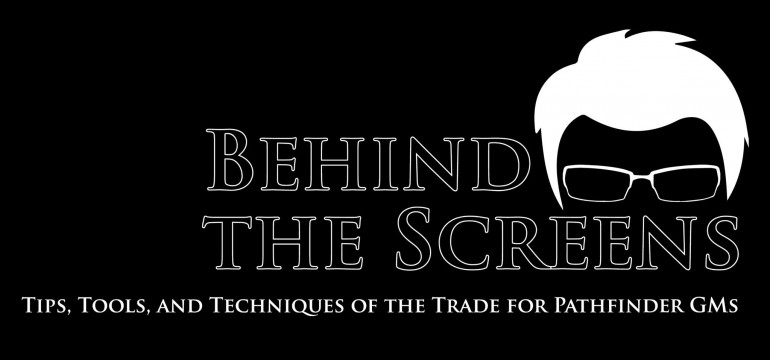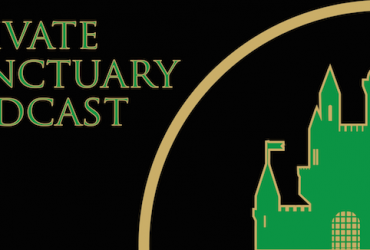With Paizo’s recent announcement of the Starfinder Campaign Setting, the Private Sanctuary’s ongoing Create Demiplane Experiment, and my dabblings in the creation of Anatolia, I thought it might be apropos to share some thoughts on Campaign Setting design – particularly with an eye on player- or world-centric approaches.
In our last Tinker/Tailor post, we examined how a party of PCs might encounter different things in a troll-infested woods based on the GM’s particular view of how the game should be run. In a PC-centric or player focused game, the PCs would encounter only things around their CR. Maybe an odd big-bad but they’d have a decent chance of escaping or something. But they certainly wouldn’t get overwhelmed by trolls. In a world-centric or world focused game, there would be exactly the sort of thing one might expected in a troll-infested woods. There’d be lots and lots of trolls. And if the PCs get torn limb from limb and eaten, well they shouldn’t have ignored the warnings about the troll-infested woods.
Obviously, this is a super simple example of two extremes. Most games will occupy a happy medium in between these two focuses. But to build on that, what I’d like to talk about today involves this particular concept when applied to the design of a Campaign Setting. I’ve structured my understanding of Campaign Settings into two different categories. Unsurprisingly, we have Player Focused Settings and World Focused Settings.
Our case study today involves two different yet similar Campaign Settings across two different yet similar game systems. The first is the venerable Faerûn of the Forgotten Realms, particularly back in its 3.x D&D heyday. The second is Golarion, of the Pathfinder RPG.
Both these Campaign Settings are similar in that they support and inspire many a GM and player to carry out adventures and tell stories in diverse lands populated with all sorts of perils, charming locales, and interesting NPCs. But the key difference, I think between these two Campaign Settings comes from their respective focuses when it comes to storytelling and design. Both Settings feature dire threats and potentially cataclysmic events. Both Settings have heroes rise up to literally save the world.
The main difference, is that in Golarion the heroes are PCs while in Faerûn they are NPCs. Just take a look at the biggest names of Faerûn: Drizzt Do’Urden, Cadderly Bonaduce, Elminster Aumar. They’re incredibly talented and powerful individuals. When big-bad’s come they’re the ones to save the day. Contrast this with Golarion’s crop of powerful NPCs. Most of those who would fight on the side of good are either dead and gone – as in the case of Aroden and the Old Mage Jatambe – or nearly overwhelmed with just keeping the stasis quo, like Queen Galfrey of Mendev. When a truly dire threat looms, it’s up to PCs to save the day.
Lots of this is intentional design. With Golarion, the idea is to create a world that’s minutes away from midnight – where the next cataclysmic event is looming and the only people who can stop it are the PCs. This is a very player focused approach to world design. It assumes that if the PCs decide to do nothing the world as it is will be irreparably changed for the worse. The PCs get to feel like the ONE saviors of the world. They get to feel like they were responsible. The PCs are more important than the world.
Which isn’t to say that’s not the case for adventures in Faerûn. But does Faerûn takes a different, world focused, approach when it comes to heroes, quests, and dire perils. In Faerûn, the PCs are heroes amongst a company of other legendary names. They might be the only ones capable of helping at the moment. But there’s always the shadow of Elminster or Drizzt to look up to. Regardless if the PCs fail, the sense is that the world will go on. Sure, things might change, evil triumphs for a bit. But one of the Big Name NPCs might show up and save the day like they always do. The world is more important than the PCs.
There are downsides to both these approaches. In the case of Golarion, the time line hasn’t really advanced. I mean, it has. In that present day Golarion is 4716, a full 10 years since the “start” of the Campaign Setting. But all of the major events in the major Adventure Paths are assumed to be burgeoning or “just-about-to-happen” so that the PCs are the ones to encounter them. Even in the case of the one sequel AP (Shattered Star), the PCs are assumed to have been triumphant in the previous APs. The PCs are more important than the world. So the world’s events don’t advance unless the PCs push them forward.
Compare this with Faerûn. Lots of things, big and small, occur in Faerûn’s timeline. The Big Name NPCs have novelized adventures and they’re earth-shatteringly relevant to the advancement of Faerûn’s storyline. The world is more imporant than the PCs. So they story will advance with or without them.
But. Like I said before, I’m using extremes to better illustrate my examples. Golarion as a setting is still developing. There are a handful of popular (and powerful) characters on the side of good doing good and heroic things. Their narratives do push the plot forward. Likewise, PCs’ adventures in Faerûn aren’t meaningless tribulations meant as a stopgap until an actual hero arrives. But overall you can see how a different approach to designing a Campaign Setting can have a drastic effect on the way in which players can and will interact with the world.
For my part, I’ve designed Anatolia to be a Player Focused Setting. I’ve done a lot of background writing to set the stage for a series of intense skirmished between warbands as they vie over the perceived prize in the center of the city. What that prize eventually is, and what it means to the winner of the conflict, is mostly going to be determined by who wins and how. And I can’t wait to see what happens.
What kinds of settings to you like to run adventures in? Where do you focus your storytelling? Let me know in the comments section below or in the forums!






I feel player driven settings are good in smaller settings. Golarion is great to make you feel like a PC-hero, but in a setting like Game of Thrones, Warcraft, or Harry Potter youd probably get more enjoyment trying to reach your heroes levels.
In both my home settings I’m using player focused storytelling.